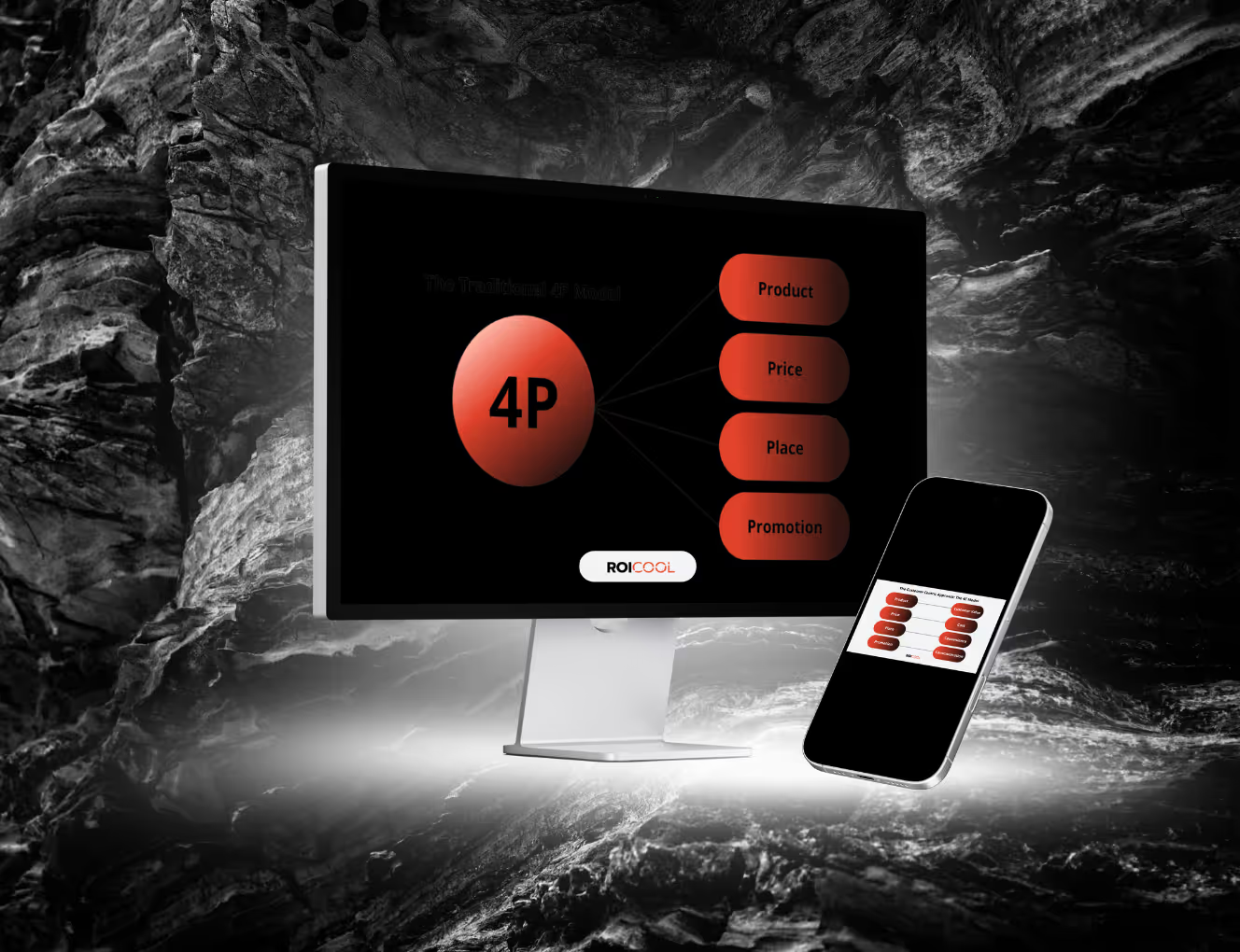In today's competitive market, it is too important for a product, service or idea to reach its target audience that it cannot be left to chance. It is at this point that “advertising” comes into play, one of the cornerstones of the modern economy and communication. So, what exactly is this powerful concept that appears every day on television, on the Internet, on the street and even in our pockets?
Advertising is much more than a simple promotional activity. It is a strategic communication art that builds the identity of a brand, occupies a place in the mind of the consumer, shapes behaviors and ultimately enables the achievement of commercial or social objectives.
In this comprehensive guide, we will not only give a definition of advertising, but we will delve deeply into every aspect of advertising, from its basic aims to the anatomy of a successful campaign, from its psychological foundations to its code of ethics.
Definition and Basic Philosophy of Advertising
In its most basic definition, advertising is an impersonal form of communication made by a specific source (the advertiser), for a certain fee, through the mass media, with the aim of informing, persuading or reminding a specific target audience.
Each element of this definition is critically important:
- A Specific Source: It is clear by whom the advertisement was made. This is important in terms of transparency and accountability.
- For Fee: Advertising space or time is purchased. This distinguishes it from other types of communication, such as word-of-mouth marketing or free promotion (PR).
- A Specific Target Audience: Advertising is not aimed at everyone, but at a specific group that has the highest potential to be interested in the product or service.
- Impersonal Communication: The message is transmitted simultaneously to a wide audience through mass media (TV, Internet, newspapers, etc.).
Advertising Psychology: The Power That Shapes Consumer Decisions
The most successful ads are not only creative ones, but also those that are able to delve deep into human psychology. Consumers' purchasing decisions are rarely entirely logical; they are often driven by subconscious impulses, emotions, and cognitive biases. Here are some basic psychological principles that advertising uses:
- Making Emotional Connections: People think with their logic, but they act with their emotions. Ads sell feelings such as happiness, security, nostalgia, success, rather than selling a product directly. A beverage brand markets not only coolness, but also friendship and joy. An insurance company, on the other hand, targets the love for the family and the instinct to protect them, rather than selling policies.
- Social Proof: In the case of uncertainty, we tend to look at what others are doing. Ads use this principle through “best-selling product” emphasis, user reviews, satisfied customer testimonials, and influencer collaborations. Seeing that others use and like a product reduces our hesitations.
- Scarcity and Urgency Principle: Fear of losing (FOMO) is a stronger motivator than the desire to win. Statements such as “Limited stock”, “Last 24 hours for the campaign”, “Exclusive to the first 100 people only” encourage immediate action by eliminating procrastination behavior.
- Principle of Reciprocity: When a favor is done to us or a gift is given, we feel indebted to give it in return. Brands that offer free trials, free samples, discount coupons or a useful e-book, using this principle, start a positive relationship with potential customers and increase the likelihood of future purchases.
- Authority and Trust: We believe more in the advice of people and institutions that are perceived as experts or trusted in their field. When a dentist recommends toothpaste in advertisements, a chef praises a kitchen appliance, or showcases awards won by a brand, reinforce the perception of trust in the consumer's mind using the principle of authority.
What are the main purposes of advertising?
Behind every advertising campaign lies a strategic goal. These purposes are usually grouped under four main headings:
- Inform: It is especially used when a new product is released or changes are made to an existing product. It serves this purpose to provide information about price changes, new uses, or how a product works.
- Persuade (Persuade): It is the most frequently used target in markets where competition is intense. It encourages the consumer to prefer their own brand over the competing brand, change the brand perception or buy a product immediately.
- Remind: It is used during the period of maturity of the product or brand. It is aimed at ensuring that the brand remains fresh in the mind of the consumer, reminding the product that the product may be needed in the near future, and reinforcing brand loyalty.
- Add Value: Advertising can add value to it in the perception of the consumer by raising the quality of the product and the brand image. A successful advertisement can make the brand appear more prestigious, innovative or reliable.
Ad Types: A Comprehensive Look at Traditional to Digital
Advertisements are basically divided into two based on the medium (channel) used.
Traditional Advertising Channels
- Television Commercials: It is still one of the most effective methods in reaching large audiences. Thanks to its visual and auditory power, it is very successful in establishing brand awareness and emotional connection.
- Radio Commercials: It is a cost-effective option, especially to reach audiences who drive vehicles or listen to the radio at certain hours. It activates the imagination of the listener by creating a “theater of the mind”.
- Print Advertisements (Newspapers and Magazines): It is effective for reaching niche audiences with specific interests (e.g. economics magazines, fashion magazines). The perception of reliability is high.
- Outdoor Ads (Out-of-Home): Billboards are advertisements in outdoor spaces, such as bus stops, building coverings. It is used to reach people in a specific geographic area and make brand reminders.
Digital Advertising Channels
- Search Engine Advertising (SEM): In searches that users make on search engines such as Google, it is paid ads that are at the top of the results. Buying intent is the most direct way to reach the highest audience.
- Social Media Advertising: They are targeted ads based on users' demographics, interests and behavior on platforms such as Facebook, Instagram, LinkedIn, TikTok. It is focused on interaction and community building.
- Display Ads: Banner (visual) ads that you see on websites and apps. It is widely used to create brand awareness and remarketing (retargeting).
- Video Ads: They are video ads that are shown before, during or after content on platforms or websites such as YouTube. It is the most powerful digital format for storytelling.
- Native Advertising: They are ads in the format of “sponsored content” that appear to be the editorial content of the platform on which it is located (for example, a news site). It aims to convey messages without interrupting the user experience.
Advertising is not just about promoting a product; it is about being able to convey an idea, an emotion and a value to the target audience at the right time, in the right language.
These definitions and strategic framework form the basis of advertising. Today, however, this foundation has acquired a whole new dimension with digitalization. Brands are no longer just visible; they need to reach the right people and with the right messages on the right digital channels. This is where digital advertising comes into play. What is Digital Advertising? If you're wondering how digital media and technologies are transforming the advertising world, let's look at the heart of this transformation together.
Anatomy of a Successful Advertising Campaign
An effective advertising campaign is an excellent combination of creativity and strategy. The path to success usually goes through these steps:
- Strategy and Goal Setting (SMART Goals): What do you expect from the campaign? Increase sales by 10%? Increasing brand awareness? Your goals WITHspecific, Mesurable (Measurable), ANDchievable (Reachable), Relevant (Related) and TIt should be ime-bound.
- Audience Analysis: Who are you calling? “Receiver Personas“create a deep understanding of the demographics, needs, motivations, and media consumption habits of your target audience.
- Creative Concept and Message (Big Idea): Find that “big idea” that will capture the attention of your target audience, mobilize them, and reflect the essence of your brand. Your message should be clear, simple and memorable.
- Choosing the Right Channel: Where does your target audience spend the most time? Determine the mix of traditional and digital channels that will convey your message most effectively.
- Budgeting and Planning: Plan how much you will spend for each phase of the campaign. Take into account media purchase, production and other expenses.
- Measurement and Optimization: Keep track of your campaign's performance with key performance indicators (KPIs) you've identified. Optimize your strategy and creative practices to make the most efficient use of your budget if necessary.
The Effects of Advertising on Society and Culture
More than just a commercial tool, advertising is a powerful element that shapes the society and culture in which we live.
- Positive Effects: It stimulates economic growth, creates jobs, informs consumers about innovations and facilitates access to information by providing financing of media channels.
- Adverse Effects: It can promote a culture of consumption, create unrealistic standards of beauty and lifestyle, reinforce societal stereotypes (stereotypes) and lead to materialism.
Ethics and Legal Regulations in Advertising
In order to protect the consumer and prevent unfair competition, advertising is subject to strict legal and ethical rules. Under the Ministry of Trade in Turkey Advertising Boardis the most authoritative body that oversees advertising. Deceptive ads, implicit ads, abusive practices targeting children, and content that demeans a competitor's brand are against the law and can face serious sanctions.
consequence
Advertising is a dynamic and multifaceted discipline that allows a brand to make its voice known, communicate its values and achieve its goals. An advertising campaign fueled by the power of psychology, planned with the right strategy and blended with creativity can change the fate of a brand. Combining the power of traditional methods with the targeting and measurement capabilities of the digital world, brands will achieve success by standing out from their competitors in today's complex marketplace. Remember, the best advertising is the product itself, but the bridge that connects that product to the right audience is a well-planned advertising strategy.










